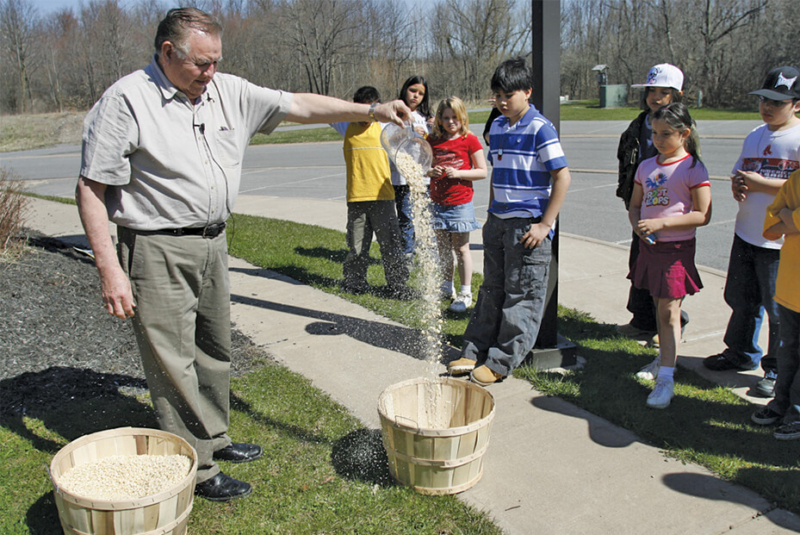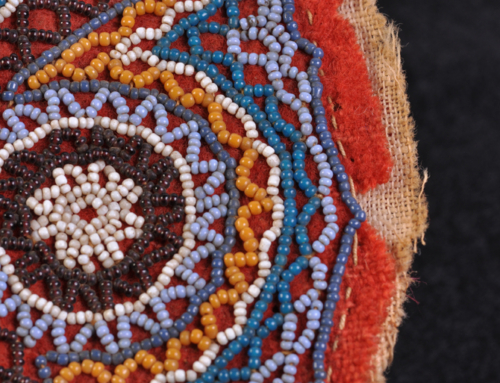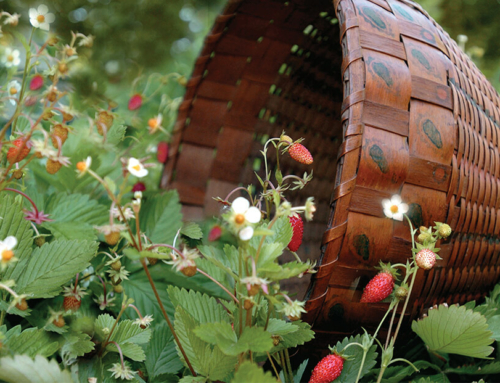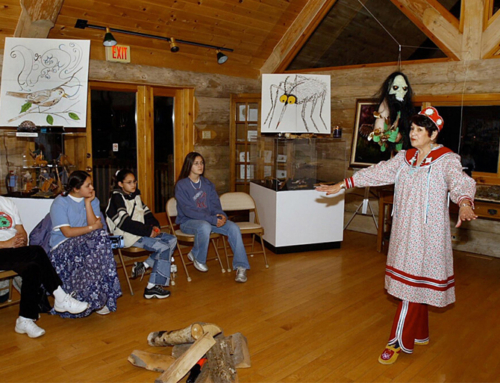This story originally appeared in The Oneida, Issue 8, Volume 10, May/June 2008.
Today’s Oneidas work diligently to preserve their culture and teach children the Oneida way of life – past and present.
On a warm spring morning, staff from the Onyota’a:ka: Language Program and children participating in the Recreation Department’s spring break activities gathered at the Cookhouse. The meeting was an informal tutorial to teach the children how to prepare Indian white corn to be used by Members in a variety of ways, including for ceremonies.
Before the three-step process began, Sheri Beglen (Wolf Clan), language instructor, asked the group why Indian corn was so important to the Oneida people. “It’s one of the Three Sisters,” piped Shawnee Patterson, as her brother, Schuyler (both Wolf Clan), offered, “It tastes good.”
While nodding her agreement, Sheri provided additional insight as to corn’s significance. “Corn was important in case we didn’t have a good hunting season; then we needed the corn. We showed many people how to grow our corn, and we ourselves use it for many purposes. We make dolls from its husks and use the kernels for corn bread, soup and mush. Remember your good thoughts will go into this corn when we store it and make soup from it.”
Ray George, Oneida language instructor, provided the brunt of the lesson to the children. He explained the process, beginning with inspecting the corn for any bad kernels.
Once the cobs are free from all blemished kernels, the corn is ready to be placed into the corn sheller, which removes the kernels from the cob. The corn sheller at the Cookhouse can accommodate two ears at a time. As the corn went into the sheller, the kids took turns spinning the wheel that moves the gears to facilitate the process. The kernels drop off into a basket under the sheller and the cobs are removed by way of a conveyor belt into another basket.
Each child was given the opportunity to crank the wheel and see the shelling procedure up close. Next came the separating of the chaff by winnowing. Outside the Cookhouse, waiting for a good breeze, Ray readied a large measuring cup full of kernels, holding it over a basket. As the wind kicked up, Ray slowly poured the kernels, holding the cup a few feet above the basket. As he poured, the chaff flew off the kernels, blowing in the direction of the wind. If the wind is low during this step, it is necessary to repeat the winnowing several times, said Ray
“It looks like popcorn,” cried Shawnee. While the children expressed interest in the process, their elders were expressing hope that they would remember the day’s lessons.
“Learning this process will help them as they get older when they will need to do this,” said Karen Dockstader (Turtle Clan), a student in the language program. “This teaches them how to prepare and preserve the corn so that they can pass it on.”
And, as Schuyler offered, “It’s important to keep our traditions.”







